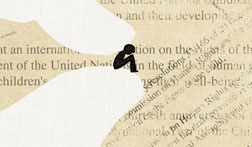Submitted by basma on
United Kingdom
Title:
JC and RT v. The Central Criminal Court
Court:
High Court of Justice, Queen's Bench Division, Divisional Court
Citation:
[2014] EWHC 1041 (QB)
Date:
8 April 2014
Instrument(s) Cited:
Children and Young Persons Act 1933, Sections 39 and 57(4)
Youth Justice and Criminal Evidence Act of 1999, Section 45
Children Act 1989, Section 97
European Convention on Human Rights, Articles 8 and 10
Case Summary:
Background:
In November 2013, the two claimants, aged 17, pleaded guilty to an offence under section 4(1) of the Explosive Substances Act 1993. There was a third defendant who did not plead guilty. All three defendants received the protection of an order under section 39 of the Children and Young Persons Act 1933 (CYPA), whereby no newspaper or broadcast media outlet could report on a child defendant's name, address, school or other identifying particulars.
The third defendant had a retrial. By the time of his retrial, the two claimants were 18-years-old. The Recorder of London considered whether the anonymity order would expire once the claimants turned 18, and ruled that it did. The claimants brought this judicial review of the decision of the Recorder.
Issue and resolution:
Juvenile justice; right to privacy. The Court rejected the judicial review, concluding that an order made by any court under section 39 of the CYPA cannot extend to reports of the proceedings after the child who is the subject of the order has reached the age of 18.
Court reasoning:
The Court considered prior case law on similar issues, and concluded that section 39 of the CYPA was intended to protect young people from publicity during the currency of their youth, but not into their adulthood. Individuals under the age of 18 may struggle with the heavy burden of publicity. However, the Court stated that "once the proceedings are over, news reports of proceedings are and always have been less likely and there is no reason to provide the same protection."
The Court noted that although there is a far greater risk of material being available now via newspaper archives online and social media, Parliament did not intend to protect adults from possible publication of their criminal conduct when under 18. In that regard, earlier decisions reflecting the law over many decades are rightly to be followed.
The Court recognised that victims and witnesses need “individual and tailor-made protection”, but said that it could not “create a solution out of legislation that was simply not designed to have regard to what is now understood of their needs”. The Court called on Parliament to “fashion a solution… as a matter of real urgency.”
Impact:
As a result of this decision, children previously involved in court proceedings - as defendants, victims or witnesses - can be named once they turn 18.
Condemning the decision, Just for Kids Law Director Shauneen Lambe said: “'The difficulties of encouraging child victims and witnesses to come forward are well recognised… For a child knowing that they could be named in the world's press once they turn 18, could be a real deterrent to their coming forward… The UN Committee of the Rights of the Child states if the defendant was a child when an offence was committed, the traditional objectives of criminal justice must give way to rehabilitation and re-integration, rather than retribution. Publishing names of those who were children during court proceedings allows the press to usurp the decision of the criminal courts and impose additional punishment.”
The claimants plan to appeal.
Notes:
The Court generally discussed the impact of international instruments, such as the Beijing Rules, on cases such as these. These international instruments are useful for policy debates, but they do not have binding or persuasive authority over domestic cases such as this case.
Link to Full Judgment:
http://www.bailii.org/ew/cases/EWHC/QB/2014/1041.html
This case summary is provided by the Child Rights International Network for educational and informational purposes only and should not be construed as legal advice.

